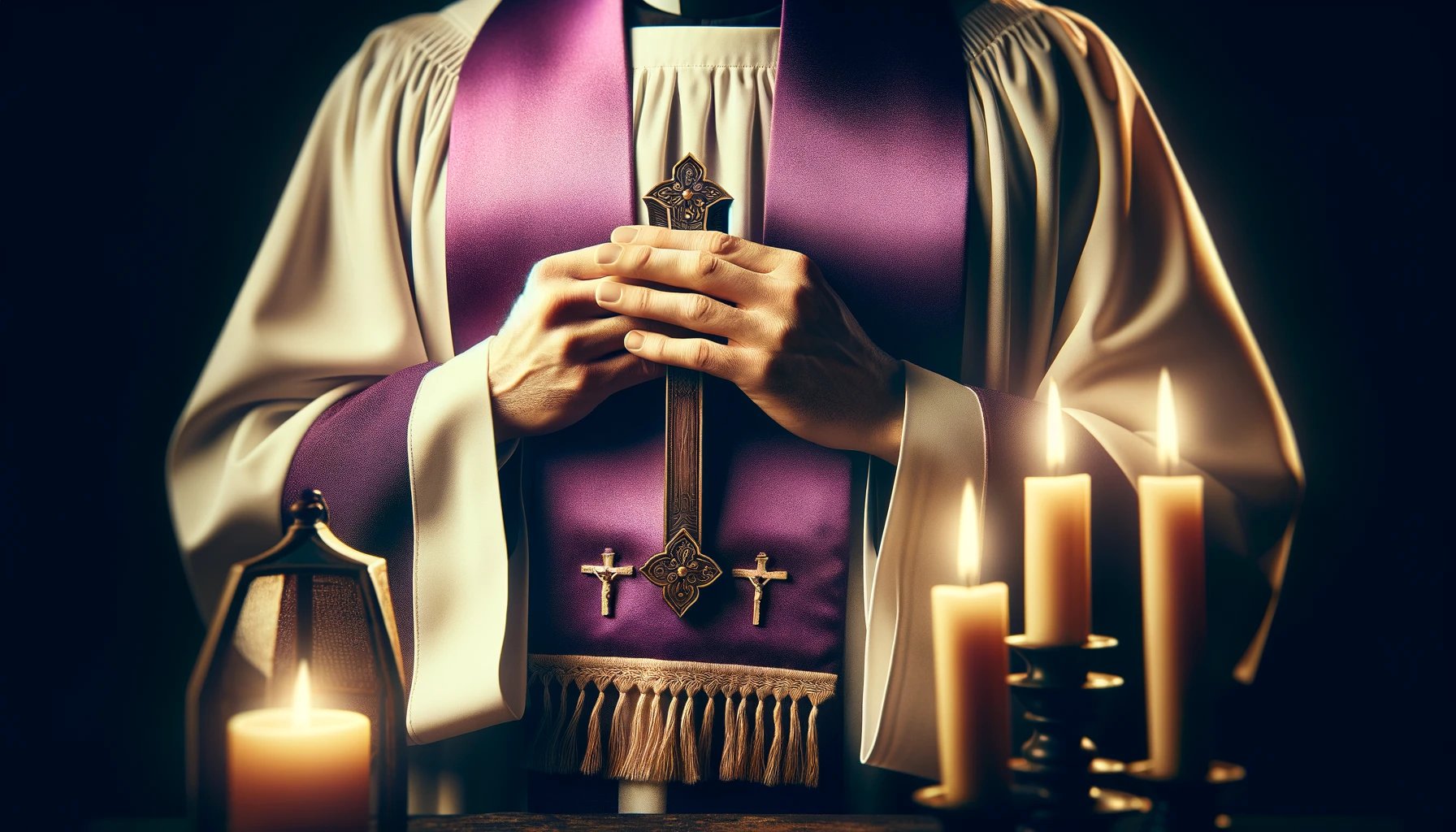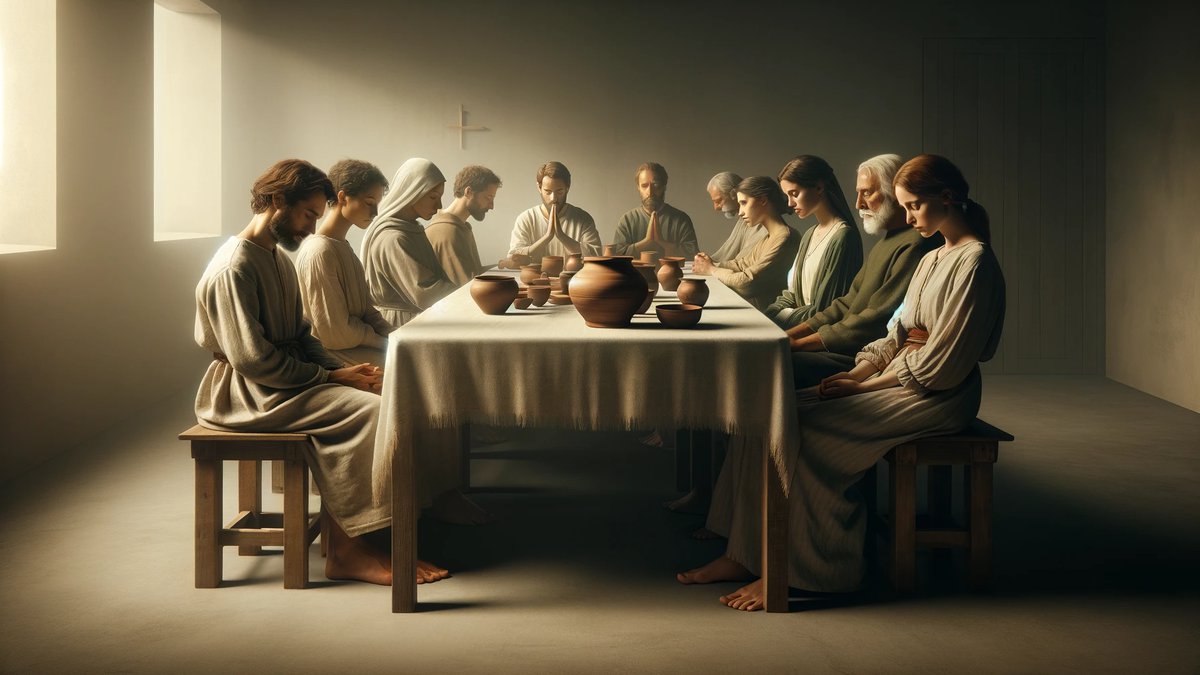Home>Special Themes>What Is The Liturgical Color During Lent?


Special Themes
What Is The Liturgical Color During Lent?
Published: February 27, 2024
Ericka Andersen, an editor at Christian.net, expertly merges digital strategy with content creation, focusing on faith and societal issues. Her communication skills enhance the platform's engaging narratives, fostering meaningful dialogue on belief's impact on society.
Discover the significance of the liturgical color during Lent and its connection to the special themes of this sacred season. Explore the symbolism and traditions behind the color choice.
(Many of the links in this article redirect to a specific reviewed product. Your purchase of these products through affiliate links helps to generate commission for Christian.net, at no extra cost. Learn more)
Table of Contents
Introduction
What is the liturgical color during Lent? This question often arises among those who observe the Christian liturgical calendar. The use of colors in religious ceremonies holds deep symbolism and significance, and the color associated with Lent carries its own profound meaning. In this article, we will explore the symbolism of liturgical colors, delve into the significance of the color purple in Lent, and discuss the historical and cultural importance of these traditions. Additionally, we will touch upon other liturgical colors that are observed during the Lenten season.
Read more: What Mysteries Are Said During Lent?
The Symbolism of Liturgical Colors
-
Rich Symbolism: Liturgical colors are not merely decorative; they carry deep symbolism and spiritual significance within the Christian tradition. Each color is carefully chosen to reflect the tone and theme of specific seasons and events in the liturgical calendar.
-
Visual Representation: These colors serve as a visual representation of the church's journey through the life of Christ and the theological themes associated with different periods. They aid in creating a sacred atmosphere and help worshippers to connect with the spiritual essence of the occasion.
-
Aid to Worship: The use of colors in worship also assists in conveying the message of the Gospel and the teachings of the Church to the congregation. It adds a layer of depth and meaning to the rituals and ceremonies, enhancing the overall worship experience.
-
Universal Language: Furthermore, liturgical colors serve as a universal language within the Christian community, transcending linguistic and cultural barriers. They provide a common visual framework that unites believers across different denominations and traditions.
-
Emotional and Spiritual Impact: Each color evokes certain emotions and spiritual reflections, guiding the faithful through the various seasons of the liturgical year. This visual journey enhances the worship experience and fosters a deeper connection to the religious narrative.
-
Continuity and Tradition: The use of specific colors throughout the liturgical calendar also reinforces a sense of continuity and tradition within the Church. It links the present-day worshippers to the practices of their predecessors, fostering a sense of unity and shared heritage.
-
Teaching Tool: Lastly, liturgical colors serve as a teaching tool, conveying theological concepts and narratives in a non-verbal, yet powerful manner. They aid in the transmission of religious knowledge and understanding, particularly for those who may be visually oriented or have limited access to written texts.
Understanding the symbolism of liturgical colors provides insight into the rich tapestry of Christian worship and the profound layers of meaning embedded within its traditions.
The Color Purple in Lent
The color purple holds a special significance during the Lenten season. Here's why:
-
Penitence and Preparation: Purple is often associated with penitence, humility, and solemnity. These qualities align with the introspective nature of Lent, a period of spiritual preparation, self-reflection, and repentance.
-
Royal Symbolism: Historically, purple has been linked to royalty and majesty. In the context of Lent, it symbolizes the sovereignty of Christ and his journey towards the cross, emphasizing the kingly nature of Jesus as the Messiah.
-
Mourning and Suffering: The color purple also conveys a sense of mourning and sorrow, reflecting the suffering and sacrifice of Christ on the cross. It serves as a visual reminder of the solemnity and gravity of the Lenten season.
-
Anticipation of Easter: Additionally, purple is used to signify the anticipation of the joyous occasion of Easter. It represents the transition from a period of solemnity and repentance to the eventual celebration of Christ's resurrection.
-
Liturgical Vestments and Decor: In churches, purple is prominently featured in the clergy's vestments, altar coverings, and other decorations during Lent. This visual emphasis on the color purple reinforces its symbolic importance and sets the tone for the season's spiritual focus.
-
Spiritual Preparation: The use of purple encourages worshippers to engage in a deeper spiritual introspection, fostering an atmosphere of reverence and contemplation as they journey through the Lenten period.
The color purple, therefore, serves as a powerful visual reminder of the Lenten themes of repentance, sacrifice, and the eventual triumph of Easter, enriching the worship experience and deepening the spiritual significance of this sacred season.
Historical and Cultural Significance
The historical and cultural significance of liturgical colors, including the use of purple during Lent, is deeply rooted in the traditions of the Christian Church. Understanding the historical context and cultural influences provides valuable insights into the evolution of these practices:
-
Early Christian Practices: The use of colors in Christian worship can be traced back to the early centuries of the Church. While the specific meanings and associations of colors have evolved over time, the practice itself has ancient roots, reflecting the rich heritage of Christian liturgical traditions.
-
Byzantine and Roman Influences: The adoption of liturgical colors was influenced by the artistic and cultural practices of the Byzantine and Roman civilizations. These influences contributed to the development of a visual and symbolic language within Christian worship, including the use of specific colors to mark different seasons and feasts.
-
Symbolism in Art and Architecture: The use of colors in religious art and architecture also played a significant role in shaping the symbolism of liturgical colors. The visual representation of biblical narratives and theological themes in artwork reinforced the association of certain colors with specific aspects of the Christian faith.
-
Cultural Interpretations: As Christianity spread to different regions and cultures, the interpretation of liturgical colors also acquired diverse cultural nuances. While certain colors may hold universal symbolism within the Church, variations in cultural interpretations have contributed to the richness and diversity of color symbolism in different Christian traditions.
-
Liturgical Reforms and Symbolism: Throughout history, liturgical reforms and theological developments have influenced the understanding and application of liturgical colors. These reforms often sought to reaffirm the symbolic significance of colors and their role in conveying the theological message of the Church to the faithful.
-
Continuity and Tradition: The historical continuity of using specific colors for different liturgical seasons and events underscores the enduring significance of these practices. This continuity serves as a link to the past, connecting contemporary worshippers to the traditions and beliefs of earlier Christian communities.
-
Cultural Adaptations: In some cases, cultural adaptations have influenced the choice of liturgical colors, incorporating local customs and traditions into the symbolism of colors used in worship. This demonstrates the dynamic nature of liturgical practices and their ability to resonate with diverse cultural contexts.
Understanding the historical and cultural significance of liturgical colors, including the color purple in Lent, provides a deeper appreciation for the spiritual and artistic dimensions of Christian worship. It highlights the interconnectedness of history, culture, and faith, shaping the visual and symbolic language of the Church.
Other Liturgical Colors in Lent
In addition to the prominent use of purple, other liturgical colors play a significant role in the observance of Lent within the Christian tradition. These colors contribute to the rich tapestry of symbolism and spiritual reflection during this sacred season:
-
Ash Wednesday: While purple remains the primary liturgical color for Lent, Ash Wednesday, which marks the beginning of the Lenten season, introduces the use of a specific color: ash gray. This color symbolizes repentance, mortality, and the solemn call to turn away from sin. The imposition of ashes in the form of a cross on the foreheads of worshippers further emphasizes the penitential nature of this day.
-
Rose or Pink: The fourth Sunday of Lent, also known as Laetare Sunday, introduces a deviation from the somber tones of purple. Rose or pink is used to symbolize a moment of joyful anticipation amidst the penitential season. This color reflects a brief respite from the solemnity of Lent, offering a glimpse of the approaching celebration of Easter.
-
Red: In some traditions, the use of red may be observed on specific days within the Lenten season, particularly to commemorate the events of Holy Week. Red symbolizes the sacrifice, passion, and martyrdom of Christ, particularly on Good Friday, when the Church reflects on the crucifixion and death of Jesus.
-
White: While white is commonly associated with the joy and purity of the Easter season, it may also be used sparingly during Lent. In certain liturgical traditions, white may be employed on feast days or special occasions within Lent, signifying the hope and anticipation of the resurrection even amidst the season of repentance and introspection.
-
Black: Though less common in contemporary liturgical practices, black historically held significance as a color of mourning and penitence. In some traditions, black may be used sparingly during Lent, particularly on Good Friday, to symbolize the solemnity and grief associated with Christ's crucifixion.
The use of these additional liturgical colors within the Lenten season adds depth and nuance to the spiritual journey of worshippers. Each color carries its own symbolic weight, contributing to the multifaceted experience of Lent as a time of repentance, preparation, and ultimately, the anticipation of the resurrection.
Understanding the significance of these varied colors enriches the worship experience and underscores the intricate layers of meaning woven into the fabric of the Lenten observance within the Christian faith.
Read more: What Scriptures To Read During Lent
Conclusion
The use of liturgical colors during Lent holds profound significance within the Christian tradition. The color purple, with its associations of penitence, royalty, and anticipation, serves as a visual anchor for the Lenten season, guiding worshippers through a period of introspection, repentance, and eventual celebration. Understanding the historical, cultural, and symbolic dimensions of liturgical colors, including the use of purple, provides valuable insights into the depth and richness of Christian worship. Additionally, the inclusion of other colors such as ash gray, rose or pink, red, white, and black within the Lenten observance adds layers of meaning and emotional resonance to this sacred season. As worshippers engage with the visual language of liturgical colors, they are invited to embark on a spiritual journey that encompasses sorrow, hope, and the ultimate triumph of Easter. The use of colors in worship serves as a powerful reminder of the enduring narrative of the Christian faith, connecting contemporary believers to the timeless traditions and beliefs of the Church.














